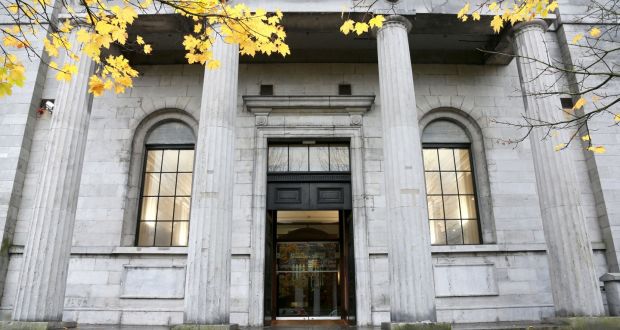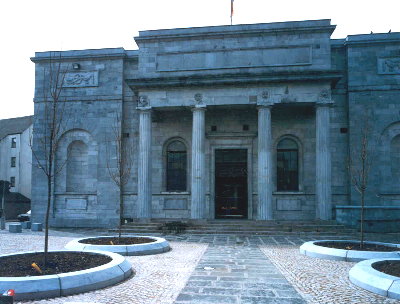Galway County Courthouse was built after the original courthouse was burnt down. This was situated in the Tholsel in Shop Street, and here also was the local prison. When the prison became too small, a new one was built near the centre of the town at the Main Guard.
The Town Courthouse was where the Town Hall is today. The courts were busy under English law - in 1830 there were 200 offences punishable by death. Because of the severity of the law, juries were often merciful. Knowing the penalty for a guilty verdict, they sometimes (against all the evidence) found the prisoners not guilty. Judge Fletcher was presiding over the case of two highwaymen, when to everyone's astonishment they were found not guilty. So he told the gaoler that it would greatly ease his mind if they could be held until 7 p.m., as he (the judge) has to travel to Ennis assizes and would like about 2 hours start on the highwaymen. The average population of the gaol, which was built in 1807 - 1810, was 68. In Spring 1847 it was 650.
On Monday, 29th June, 1818, the first stone of the new (Salmon Weir) bridge leading from the county courthouse to the gaol was laid, and the work was finished in October 1919. The town gaol was three stories high. The basement housed the keeper and his family, debtors occupied rooms along the front of the building, and the third storey provided cells for the solitary confinement of 'incorrigible felons'.
Besides two spacious and well-appointed courts for transacting the civil and criminal business, with grand and petty-jury rooms adjoining, there are several commodious offices and apartments for the high-sheriff, treasurer, clerk of the case and other law officers. The splendid and accurate map and survey of the county, together with the several baronial maps made by order of the grand jury, are preserved here. The lofty portico, entrance, and extensive hall of this fine structure immediately attract attention. It is altogether an edifice highly creditable to the county, and considerably ornamental to the town.
Galway Courthouse is supported by Galway Court Office.



